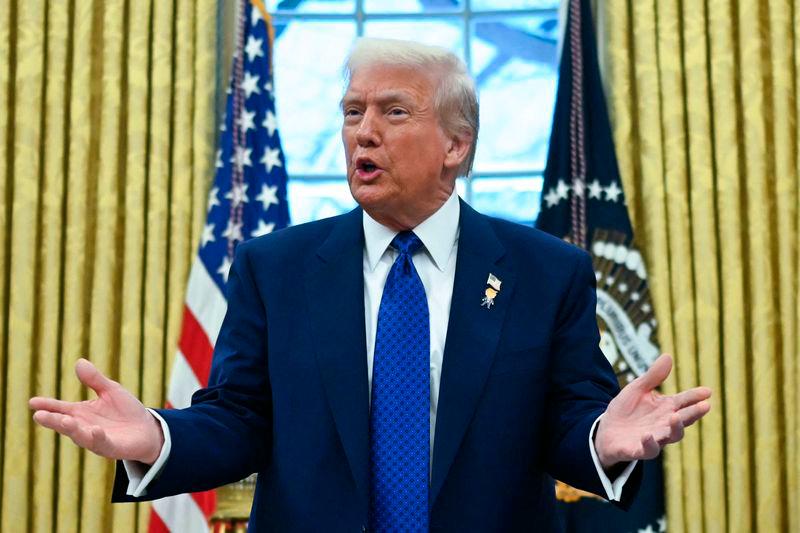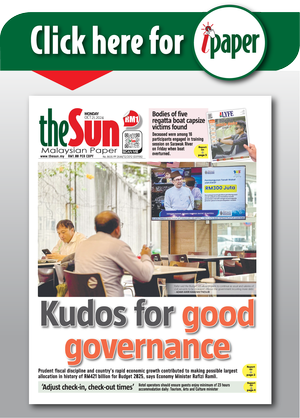WASHINGTON: US President Donald Trump on Wednesday blamed his predecessor Joe Biden for last month's unexpected acceleration in consumer inflation, as he looked to deflect a moment of potential political peril early in his second term.
The consumer price index (CPI) edged up to 3.0 percent in January from a year ago, the Labor Department said in a statement -- slightly above economists' estimates.
Stripping away volatile food and energy costs, so-called core inflation rose by 3.3 percent over the past 12 months, which was also slightly above expectations.
“BIDEN INFLATION UP!” Trump wrote on Truth Social shortly after the data was published, seeking to blame Biden for the CPI figures, which included 12 days in which was Trump was in office.
“It’s far worse than I think anybody anticipated, because unfortunately, the previous administration was not transparent in where the economy truly was,“ White House Press Secretary Karoline Leavitt told reporters in Washington later Wednesday.
Inflation increased by 0.5 percent in January from a month earlier, while core inflation rose by 0.4 percent.
- 'Close but not there' -
On the campaign trail, Trump frequently touted inflation and the cost of living under his predecessor as key issues, along with immigration, as he looked to capitalize on negative public perceptions of Biden's handling of the economy.
Now Trump faces the worrying prospect that the increase in prices of essential items could continue to accelerate on his watch.
The cost of eggs surged more than 15 percent last month as farmers contended with avian flu, marking the largest increase in the index since June 2015, according to the Labor Department.
Gasoline prices also jumped, along with several other politically potent price points.
“President Trump campaigned on lowering costs for working families but today’s inflation data highlights how he is failing to deliver on that promise,“ Democratic Senator Elizabeth Warren said in a statement.
The January inflation data will likely fuel calls for the Federal Reserve -- the independent US central bank -- to hold its key lending rate at between 4.25 and 4.50 percent as it waits for price pressures to ease.
Speaking in Congress on Wednesday, Fed chair Jerome Powell said the CPI data reinforced the bank's recent cautious approach on interest rate cuts.
“We’re close but not there on inflation,“ he said. “And you did see today’s inflation print which says the same thing.”
Financial markets have pared back their rate cut expectations in recent days, and now see a chance of close to 70 percent that the Fed will make no more than one rate cut in 2025, according to data from CME Group.
- 'Hand in hand' -
Trump on Wednesday also called for interest rates to be lowered, adding they would “go hand in hand” with his plans to impose tariffs on major US trading partners -- despite many economists arguing that both measures could boost inflation.
Also on Wednesday, a White House official confirmed to AFP that Trump's planned 25 percent tariffs on all steel and aluminum imports would be imposed on top of 25 percent tariffs the US president has threatened to slap on Canada and Mexico.
If those sweeping 25 percent tariffs are imposed in early March, the levies on Canadian and Mexican steel and aluminum could hit 50 percent, the official said, speaking on condition of anonymity.
That could sharply raise the cost of materials that are crucial to US construction and manufacturing.
“Any administration is always going to be looking for lower interest rates, as they tend to be growth stimulative,“ EY chief economist Gregory Daco told AFP.
“The paradox is that the policies that are being promoted by the administration tend to have an inflationary lean, and therefore would favor the Fed maintaining a higher-for-longer stance,“ he added.









